In a world brimming with visual noise and constant clutter, the allure of minimalist living room design offers a serene escape that many of us crave. Whether you’re a seasoned decorator or just beginning your journey into the world of home interiors, understanding the essence of minimalism can transform your living space into a haven of tranquility and elegance. It’s about embracing the philosophy that less is more, where every element serves a purpose and contributes to a cohesive, calming environment.
For those venturing into minimalism for the first time, you’ll uncover how simplicity can be both stylish and functional, creating a space that feels open and inviting. Seasoned decorators will appreciate the fresh perspectives and innovative ideas that keep minimalist design evolving while maintaining its core principles. Within this article, we’ll explore seven brilliant minimalist living room designs that balance form and function, offering practical tips and inspiration to infuse your own home with a touch of minimalist magic.
By the end, you’ll be equipped with actionable insights to curate your living room with intentionality, transforming it into a space that not only looks beautiful but also enhances your everyday life. Join us as we delve into the art of minimalism, where simplicity meets sophistication, and every choice contributes to a harmonious home. Whether you’re looking to completely overhaul your space or simply looking for a few fresh ideas, this guide is your trusted companion on the journey to minimalist living.
Embracing Open Space Aesthetics
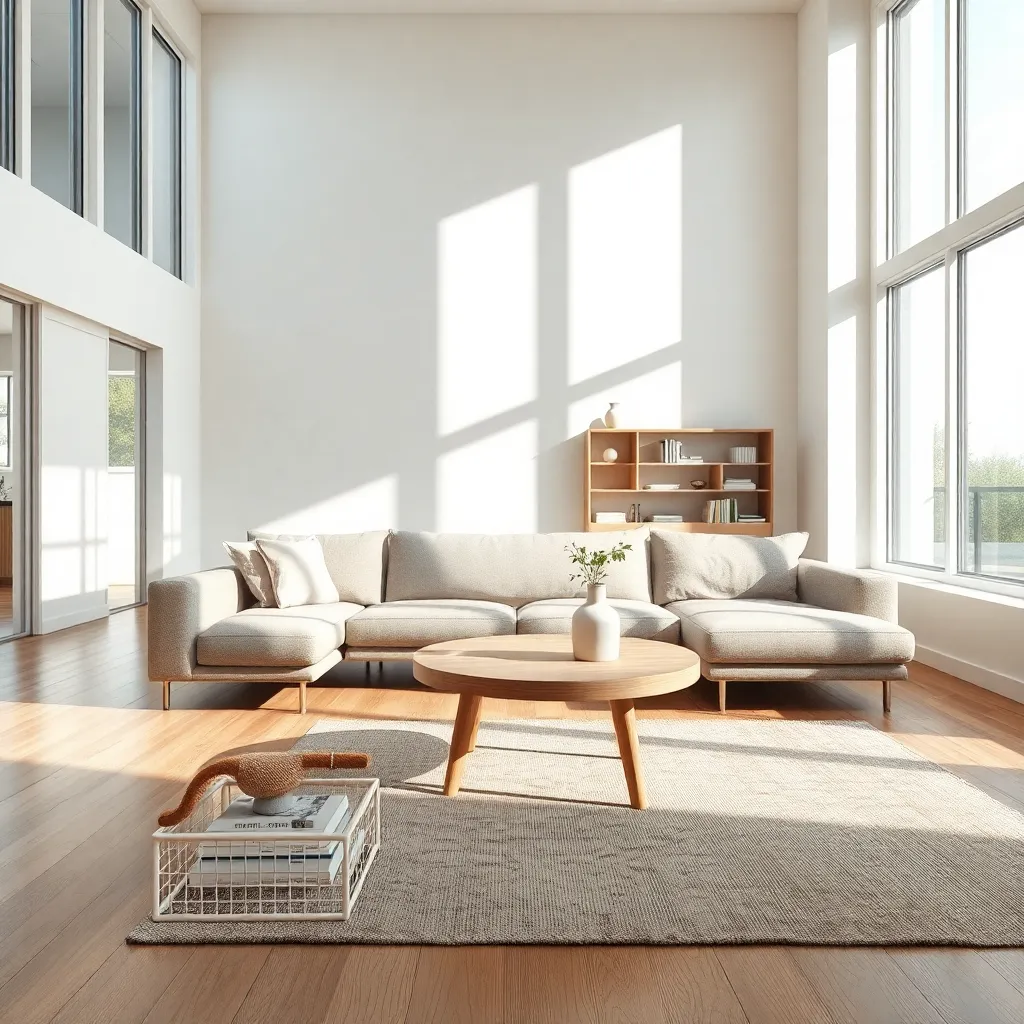
Open space aesthetics focus on creating a sense of airiness and fluidity in your living room. Begin by selecting furniture pieces that are sleek and low-profile, such as a minimalist sofa with a neutral fabric to maintain an unobtrusive presence in the room.
Consider using a soft, monochromatic color palette to enhance the feeling of openness. Shades of white, beige, and light gray work well together, allowing natural light to bounce around the room and further amplify the spacious atmosphere.
It’s crucial to pay attention to the layout, ensuring that there is ample space to move around freely. Avoid clutter by incorporating multifunctional furniture, like a coffee table with storage or a modular shelving unit that can double as a room divider.
For those looking to add a touch of sophistication, introduce reflective surfaces such as a large mirror or a glass-topped table. These elements not only add visual interest but also help to visually expand the room by reflecting light and adjacent spaces.
Choosing Neutral Color Palettes
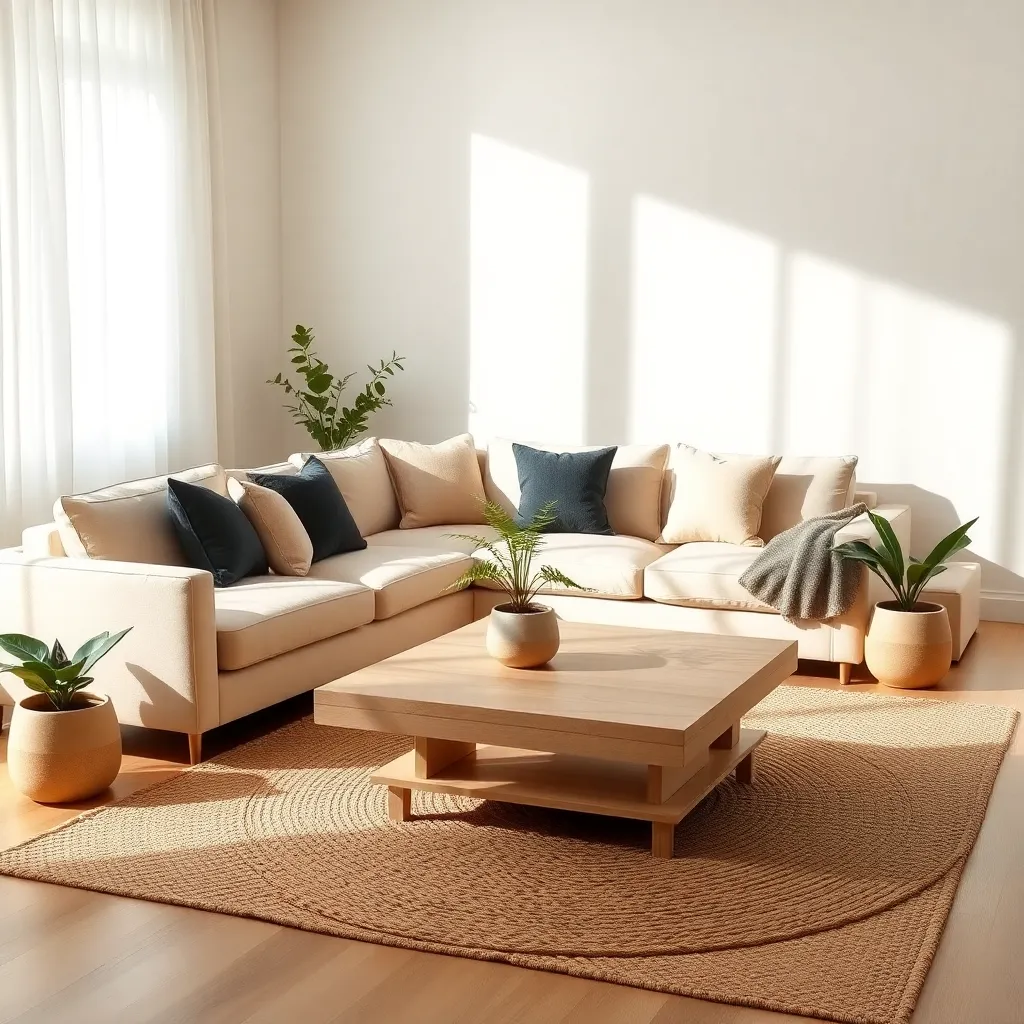
Neutral color palettes are a cornerstone of minimalist design, offering a serene backdrop that emphasizes simplicity and elegance. To start, consider shades of white, beige, gray, and taupe as the foundational hues for your living room walls and large furniture pieces. These colors can create an airy and spacious feel, perfect for enhancing the open space aesthetics you may already be embracing.
When selecting furniture, opt for pieces in soft, neutral tones to maintain a cohesive look. Pairing a light gray sofa with a cream-colored rug can add subtle contrast while keeping the overall scheme harmonious. Textural variety is key in a neutral palette; consider materials like linen, wool, and natural wood to add depth and interest without overwhelming the senses.
Adding layers to your design can be achieved through careful placement of accessories in complementary shades. For instance, use throw pillows in varying shades of taupe and ivory to create visual layers on your seating. Incorporate metallic or glass elements, such as a sleek silver lamp or a clear glass coffee table, to introduce a touch of sophistication without deviating from the minimalist theme.
Advanced decorators can explore the subtle use of accent colors to enhance a neutral palette. Introducing a muted pastel or an earthy tone in small doses, like a soft blush or olive green, can provide a gentle pop of color. Strategic placement of these accents, such as in artwork or a single piece of furniture, can add a personalized touch while maintaining the minimalist ethos.
Incorporating Functional Furniture
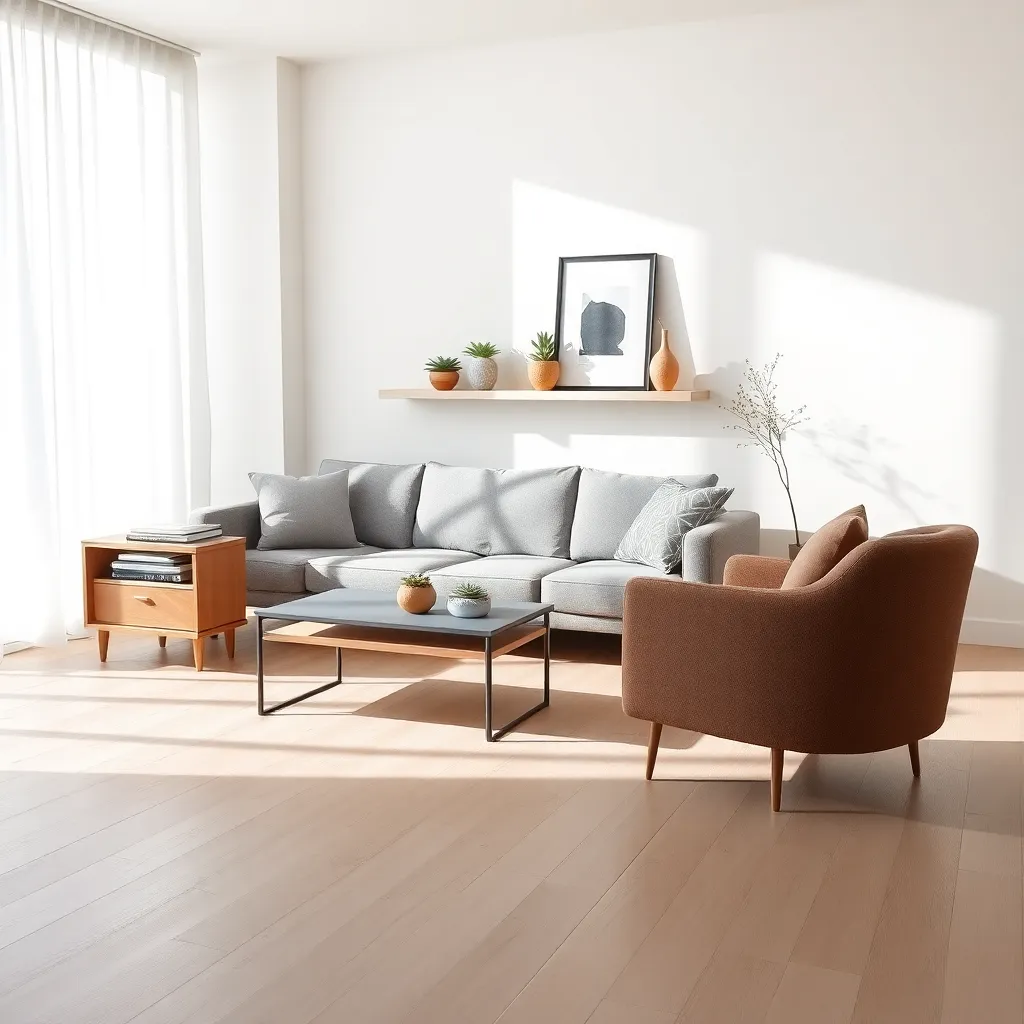
Incorporating functional furniture is key to achieving a minimalist living room that doesn’t sacrifice comfort or utility. Begin by selecting pieces that serve multiple purposes, such as a sofa bed or an ottoman with storage. These choices maximize space without compromising on style, ensuring every item in the room contributes to the overall design and function.
Focus on pieces that offer clean lines and simple forms to maintain a minimalist aesthetic. A sleek, low-profile coffee table or a console table with hidden compartments can provide the perfect blend of form and function. Opt for neutral colors and natural materials like wood and stone, which add warmth and texture while keeping the design understated.
Consider the placement of your functional furniture to enhance the room’s flow and usability. Arrange seating to encourage conversation, positioning chairs and sofas to face each other rather than the television. For smaller spaces, wall-mounted shelves or foldable furniture can free up floor space, creating an open and airy atmosphere.
Advanced decorators can experiment with integrating technology into their furniture for added convenience. Look for tables with built-in charging stations or smart sofas equipped with USB ports to seamlessly blend tech into your living room. Ensure these elements are subtle to maintain the minimalist ethos, focusing on keeping clutter hidden while maintaining accessibility.
Integrating Natural Light Sources
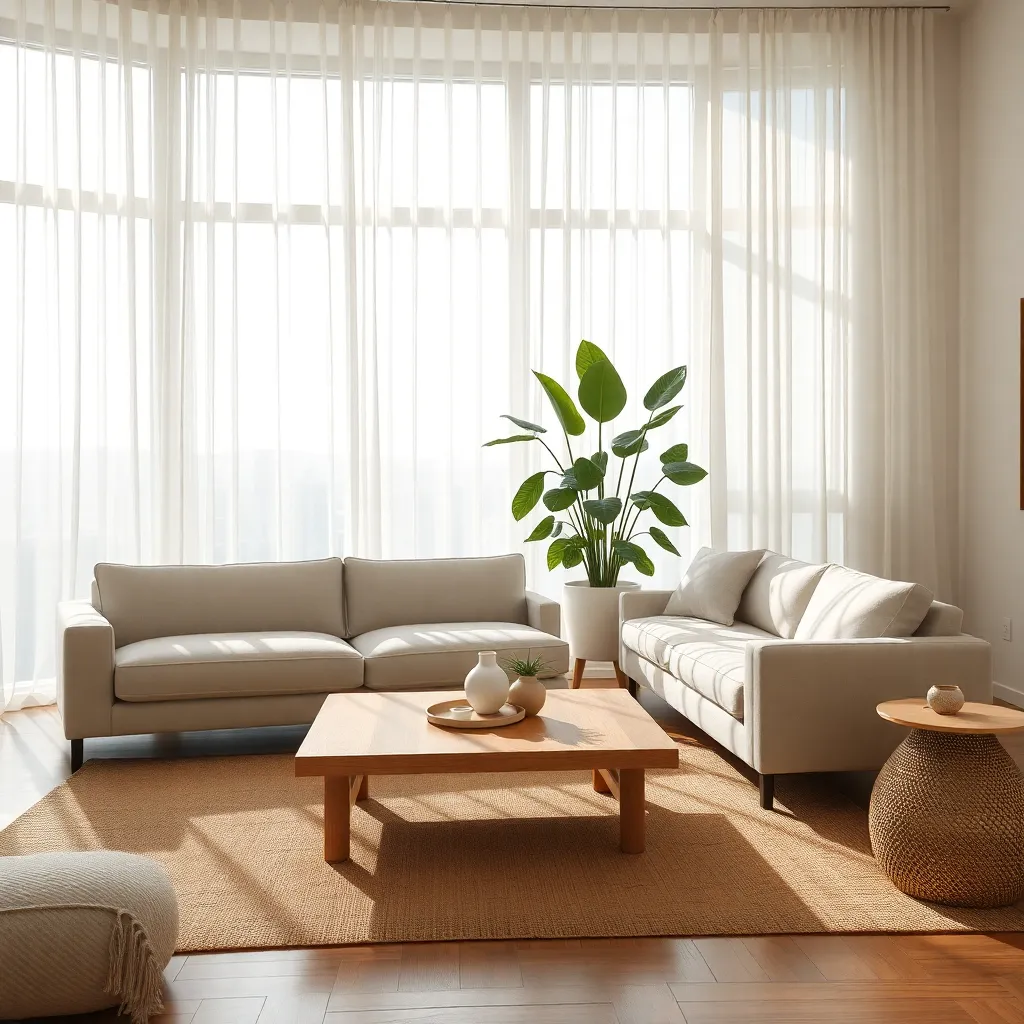
Natural light is a cornerstone of minimalist design, offering both beauty and functionality. To maximize the natural light in your living room, consider using sheer, light-colored curtains that allow sunlight to gently filter through while maintaining privacy.
Position mirrors strategically to reflect sunlight deeper into the room, effectively brightening the space without additional electricity. Choose mirrors with simple, clean lines to adhere to minimalist aesthetics, ensuring they harmonize with the overall room design.
For those with bay windows or large panes, opt for low-profile furniture that won’t obstruct the light flow. Pieces like low-slung sofas or glass coffee tables can enhance the airy feel and prevent the room from feeling cramped.
Consider painting walls in soft, neutral tones such as whites, beiges, or light grays to amplify the effect of natural light. These colors not only reflect more light but also contribute to a serene and uncluttered atmosphere, perfect for a minimalist living room.
Utilizing Hidden Storage Solutions
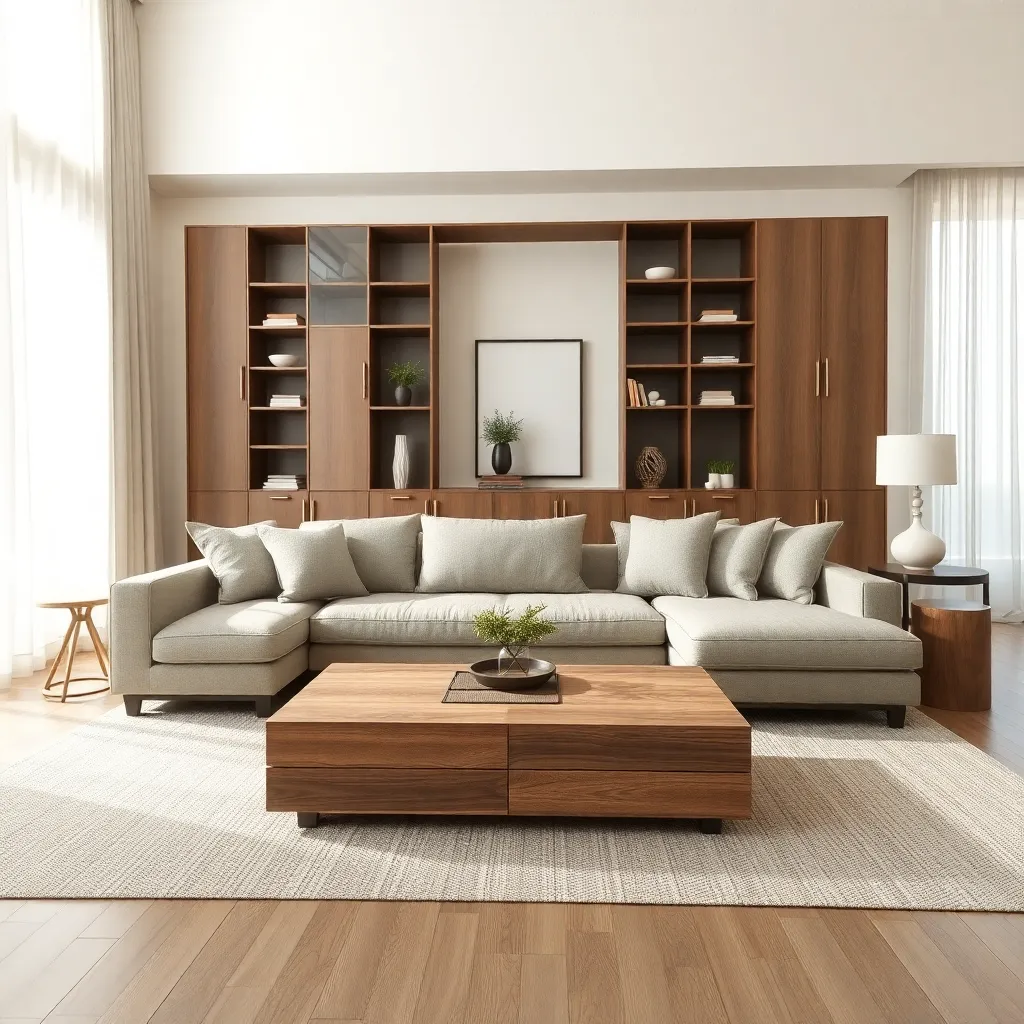
Embracing hidden storage solutions is a game-changer for minimalist living rooms. By opting for furniture pieces like ottomans with hidden compartments or coffee tables with built-in drawers, you can maintain a clutter-free environment while keeping essentials close at hand.
Consider using multi-functional furniture to maximize space efficiency. For instance, a sofa with storage underneath not only offers seating but also provides a discreet place for storing extra blankets or magazines.
Wall-mounted shelves with hidden compartments can be both decorative and practical. These shelves not only display your favorite books or art pieces but also offer secret spaces for less visually appealing items, helping maintain the minimalist aesthetic.
For those willing to invest a bit more, custom-built solutions can be tailored to fit your specific needs and style preferences. Incorporating a built-in bench with lift-up seats in a window nook adds both seating and storage without disrupting the room’s flow.
Adding Subtle Decorative Elements
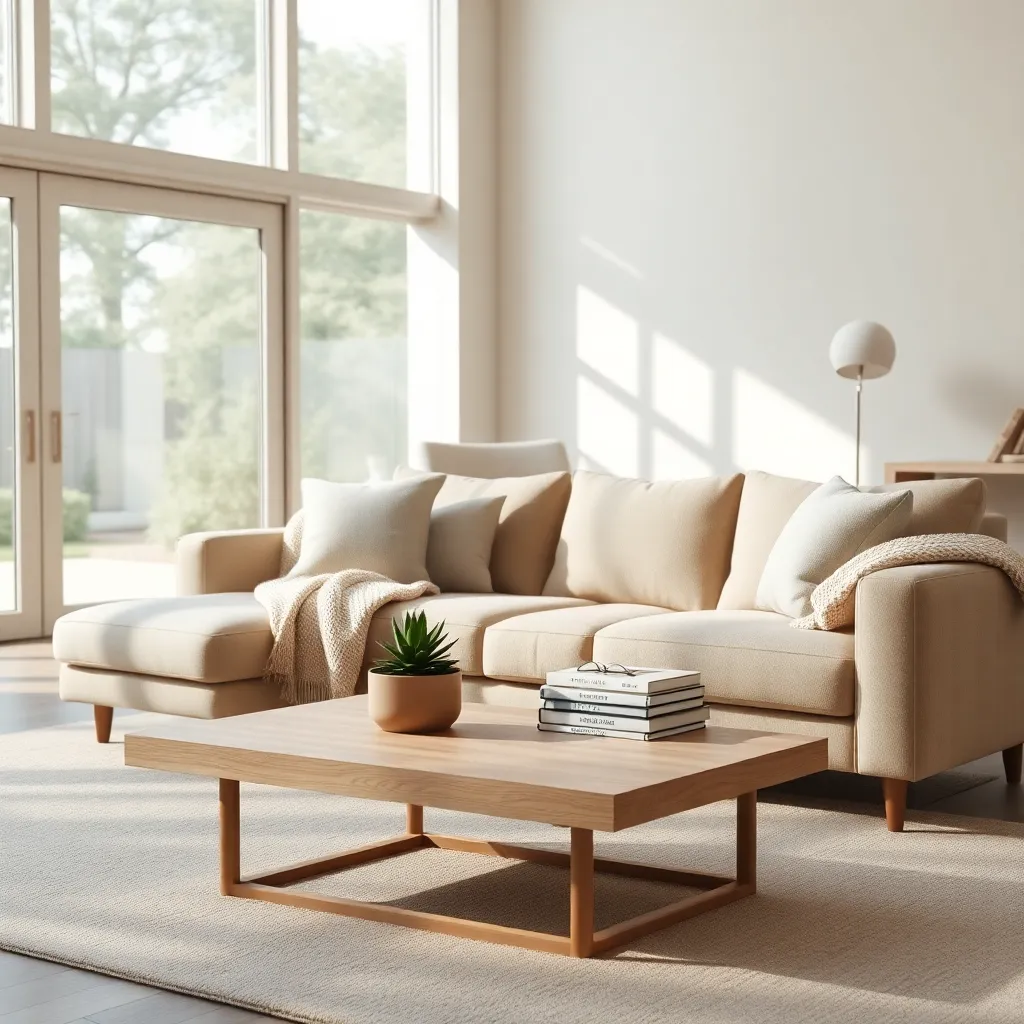
In a minimalist living room, adding subtle decorative elements can elevate the space without overwhelming it. Consider incorporating textured throw pillows or a simple woven blanket to add warmth and interest to your seating area, choosing neutral colors to maintain the minimalist aesthetic.
Artwork can be a powerful yet understated addition when used thoughtfully. Opt for one or two large pieces with clean lines and a limited color palette, which can serve as focal points without cluttering the space.
For those looking to add a touch of nature, introducing greenery can be both refreshing and subtle. Small potted plants or succulents placed on shelves or side tables can bring in natural elements while keeping the room’s design simple and uncluttered.
Enhancing the room’s lighting can also contribute to its minimalist charm. Use sleek, modern light fixtures to provide functional illumination and add a touch of style, selecting pieces with metallic finishes for a contemporary look.
Maintaining a Clutter-Free Environment
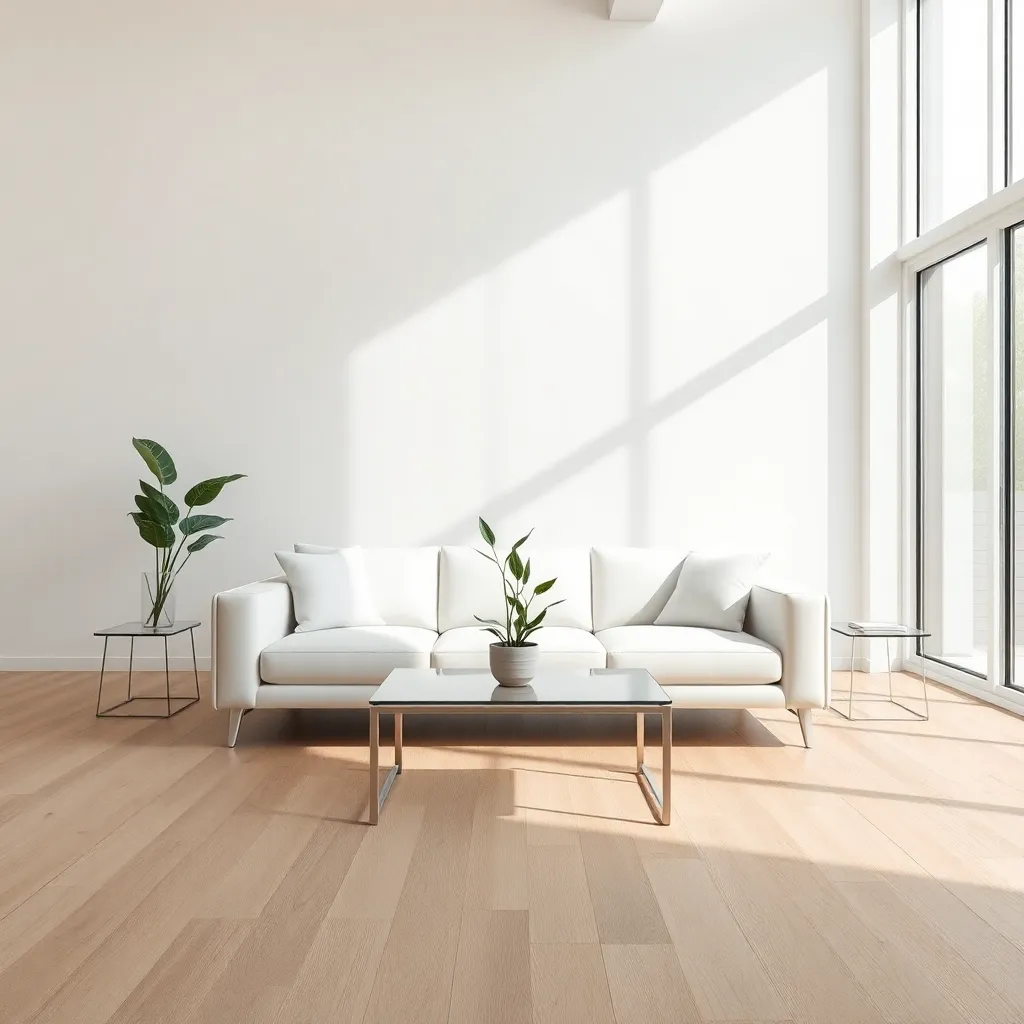
To maintain a clutter-free environment, start by selecting furniture that offers hidden storage options. Pieces like ottomans with removable tops or coffee tables with drawers can help keep your living room neat and organized.
Consider implementing a regular decluttering routine to prevent the accumulation of unnecessary items. Schedule a monthly review of your living room to remove items that no longer serve a purpose or contribute to your desired aesthetic.
Incorporating multi-functional furniture is an advanced strategy for those looking to optimize space. For example, a sofa bed or a bookshelf that doubles as a room divider can help maintain a minimalist look while maximizing functionality.
Color schemes also play a crucial role in creating a clutter-free appearance. Opt for a neutral palette with occasional pops of color to maintain a clean and airy feel, avoiding visual clutter that can arise from overly complex color schemes.
Conclusion: Growing Success with These Plants
In exploring the ‘7 Brilliant Minimalist Living Room Designs,’ we’ve uncovered key relationship concepts that resonate beyond interior design. First, simplicity enhances clarity, much like open communication in relationships. Second, intentionality in design mirrors the need for purposeful actions with loved ones. Third, balance in decor reflects the equilibrium required in partnerships. Fourth, the beauty of negative space reminds us of the importance of giving each other room to grow. Fifth, multifunctionality in furniture parallels the adaptability needed in relationships. Sixth, incorporating nature into design highlights the healing power of connecting with the world and each other. Finally, personal touches in decor emphasize the uniqueness of every relationship.
As a next step, consider simplifying a space in your home as a couple. This small project can foster teamwork, communication, and shared vision. Remember to save or bookmark this article for future reference, ensuring you have these insights at your fingertips whenever you need a reminder of the foundational elements of a strong relationship.
Looking forward, embracing these minimalist principles can lead to more harmonious, balanced, and successful relationships. Empower yourself to take action today, knowing that each step brings you closer to a deeper connection with your partner.
